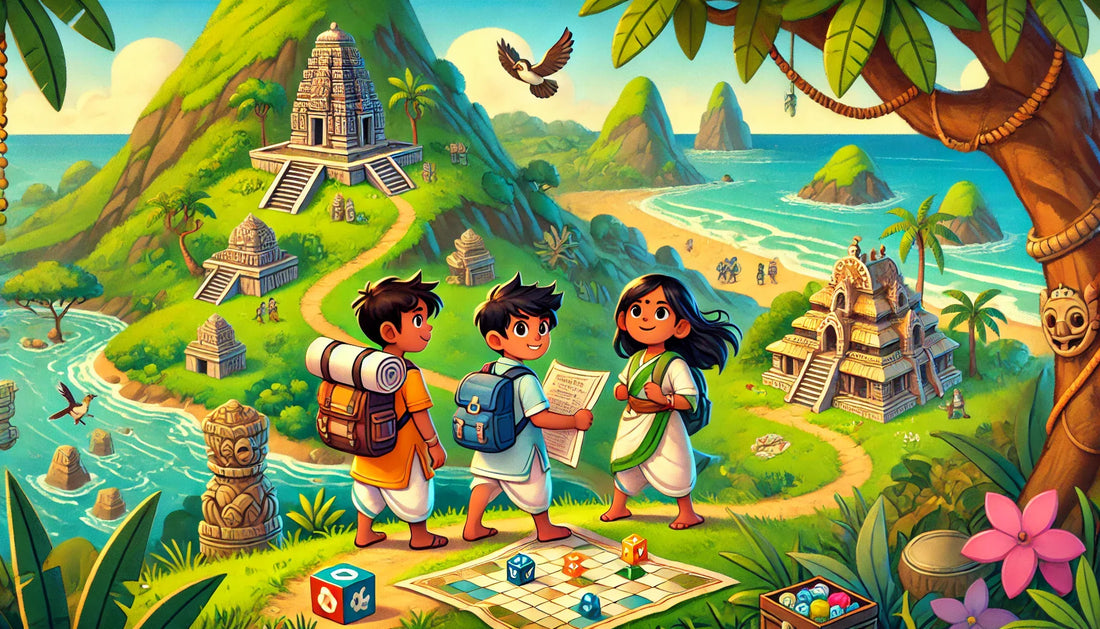
Rediscovering Indian Board Games: Reviving Lost Treasures of Play
Share
India, a land of diverse cultures and rich traditions, has always had an enduring relationship with games. From intricate strategy-based games to simple leisure activities, traditional Indian board games have been integral to community bonding, intellectual growth, and cultural storytelling. Sadly, many of these games have faded from mainstream popularity. But a movement to revive these treasures is underway, and it promises to reconnect modern generations with their cultural roots.
The Golden Era of Indian Board Games
India's history with board games dates back thousands of years. Ancient texts, temple carvings, and archaeological finds highlight the cultural significance of games in Indian society.
-
Chaturanga: Often considered the precursor to modern chess, Chaturanga emerged in the Gupta Empire around the 6th century CE. This four-player strategy game symbolized the Indian army, with pieces representing infantry, cavalry, elephants, and chariots.
-
Pachisi: Known as the "national game of India," Pachisi’s vibrant mats have been depicted in Ajanta caves and Mughal miniatures. It’s a game of skill and chance, with roots in royal courts.
-
Aadu Huli (Tiger and Goat): This game of strategy from South India involves a cunning tiger trying to outwit a group of goats. It’s a vivid representation of predator-prey dynamics.
-
Navakankari (Nine Men’s Morris): This ancient game of alignment and capture dates back to the Harappan civilization and continues to be popular in rural pockets of the country.
Why Did These Games Fade?
Despite their historical and cultural importance, traditional Indian games began losing their prominence during colonial rule. The British introduced Western games like cricket and polo, which overshadowed indigenous ones. Over time, urbanization, globalization, and technological advancements further diminished the appeal of these games.
The introduction of mass-produced toys and digital gaming also played a significant role. Families shifted from mats and dice to screens, and oral traditions of teaching these games began to vanish.
The Cultural Significance of Reviving Traditional Games
Reviving Indian board games is about more than just nostalgia. These games are invaluable for:
-
Cultural Preservation: Each game carries stories, values, and regional identities that deserve to be cherished.
-
Skill Development: From strategic thinking to emotional regulation, these games foster cognitive, social, and emotional growth.
-
Sustainability: Many traditional games are crafted from eco-friendly materials, promoting sustainable play.
Efforts to Bring Back the Glory
Several organizations, entrepreneurs, and cultural enthusiasts have taken up the mantle of reviving traditional Indian games.
-
Roll the Dice: At Roll the Dice, we’ve reintroduced classics like Chowka Bara, Navakankari, and Pagade with a modern twist. Our premium handcrafted sets and workshops aim to bring families and communities together.
-
NGOs and Schools: Educational institutions and non-profits are incorporating traditional games into their curricula to teach children about cultural heritage while enhancing their critical thinking and collaboration skills.
-
Digital Platforms: Platforms like Tollugatti are making these games accessible digitally, offering multiplayer options and engaging younger audiences.
-
Artisan Support: Craft clusters across India are creating beautiful versions of these games, sustaining livelihoods while preserving traditional artistry.
Stories of Revival
The Resurrection of Chowka Bara
Chowka Bara, also known as Pachisi in its simplified form, was almost lost to urban households. Today, it’s making a comeback as an educational and recreational game for children. Its unique semi-cylindrical dice and gameplay rules captivate players of all ages. Workshops by organizations like Roll the Dice have been instrumental in popularizing it among school students and families alike.
Aadu Huli and the Art of Strategy
In Tamil Nadu and Karnataka, Aadu Huli was traditionally played on temple courtyards. Modern boards with colorful designs have revived interest, especially among young adults looking for alternatives to screen time.
How Can You Get Involved?
You can become a part of this revival movement in simple ways:
-
Learn the Games: Attend workshops or explore online tutorials to understand the rules and strategies.
-
Incorporate Them Into Gatherings: Introduce traditional games at family events or social gatherings. These games are perfect for breaking the ice and sparking conversations.
-
Support Artisans: Opt for handcrafted game sets made by local artisans to preserve their craft.
-
Share the Joy: Talk about these games on social media to inspire others to explore them.
A Future Rooted in Tradition
While digital gaming dominates modern entertainment, traditional Indian board games offer something unique: a tangible connection to history, family, and culture. By reviving these games, we’re not just resurrecting a pastime—we’re creating bridges between generations and fostering a sense of belonging.
To start your journey, explore our Roll the Dice collection and discover how these games can enrich your life. Together, we can ensure that these cultural gems remain a vibrant part of India’s legacy.
References:
-
Singh, R. (2021). The History of Indian Games.
-
Desai, M. (2020). Reviving Pachisi: A Cultural Odyssey.
-
Tollugatti.com—Digital Indian Board Games Platform.
